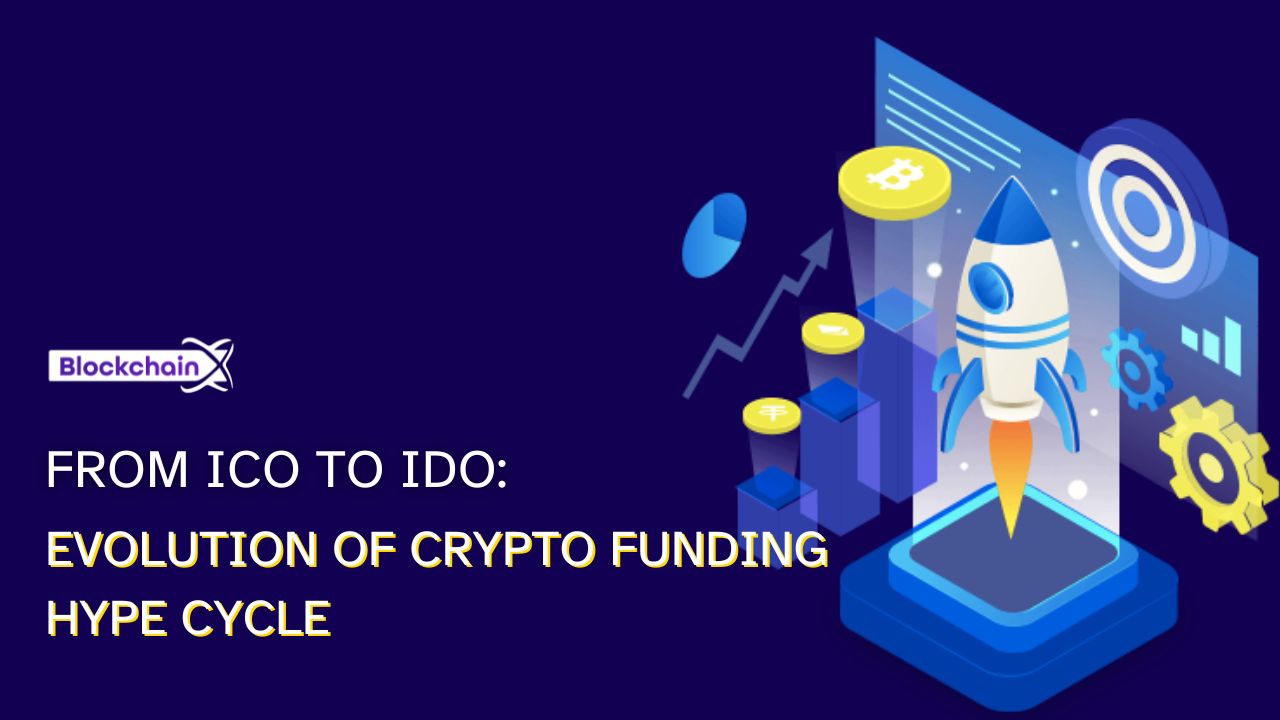From ICO to IDO: Evolution of the Crypto Funding Hype Cycle > What Became to the ICO? IEO and ICO versus IDO?
What Became to the ICO?
The need for more secure crowdfunding platforms emerged during the height of the 2017 cryptocurrency bull market, when a wave of high-risk ICO Development services hit the market. I explored this topic in depth in an article I wrote back in early 2019, as that same year, cryptocurrency exchange platforms like Binance pioneered the idea of the IEO (Initial Exchange Offering) to provide a more secure launchpad environment. The Decentralised ICO, a concept proposed in 2018 by Vitalik Buterin, followed the ICO fundraising logic but enhanced it by, among other things, not releasing all cash at once, which is one of the biggest drawbacks of ICOs. Other experiments were also being conducted concurrently.
IEOs were safe and convenient, but their centralization—where a middleman chooses which projects should be approved and charges a fee for the privilege—was a significant downside. Not quite the crypto ethos of decentralization.
Decentralized crowdfunding is now feasible because of DEX platforms, which have billions in total locked value and daily trade volumes, following the DeFi ecosystem’s explosive rise. IDOs (Initial DEX Offerings) can offer a substitute for their centralized predecessors by utilizing such DEXs.
IEOs were safe and convenient, but their centralization—where a middleman chooses which projects should be approved and charges a fee for the privilege—was a significant downside. Not quite the crypto ethos of decentralization.
2. Describe an IDO.
Initial DEX Offerings, as opposed to centralized fundraising or cryptocurrency exchange platforms, are token crowdfunding sales that take place on decentralized exchange platforms like Uniswap, SushiSwap, and PancakeSwap. The Ethereum blockchain served as the foundation for the oldest and most well-known DEXs, although alternatives on the Binance Smart Chain (BSC), Solana, and Polkadot blockchains are becoming more and more popular. A cryptocurrency project can use an IDO to announce the DEX public debut of its token and pique the interest of retail investors.
Initial DEX Offerings are token crowdsales that take place on platforms for decentralized exchanges.In 2019, Raven Protocol launched the first-ever IDO, making history. Projects like Compound, UMA, and Curve that have since become well-known names in the defi ecosystem shortly afterward.
IDOs launch project tokens on DEXs by opening liquidity pools of token pairs, for example, ETH/USDT, rather than order books, which is a significant departure from traditional exchanges. As a result, the price will only change in response to purchases or sales of the token and changes in the proportion of tokens in liquidity pools.
IDOs can be independently carried out by the token project and trustlessly published on a decentralized exchange, setting them apart from both the IEO and ICO funding models. In accordance with the peer-to-peer roots of the space, this enables new projects to interact directly with a decentralized investment community rather than through intermediaries.
IDOs can be independently carried out by the token project and trustlessly published on a decentralized exchange, setting them apart from both the IEO and ICO funding models.
3. IEO and ICO versus IDO
Beyond the decentralization ethos, IDOs have a number of advantages over ICOs and IEOs. In general, Initial DEX Offerings without restrictions offer frictionless liquidity, instant trading, and much lower listing expenses. IDOs are seen as a more open, transparent, and fair approach to introduce a new cryptocurrency project than the pre-mined ico development solutions models of the past that rewarded founders over adequate community distribution because they do away with intermediaries.
IDOs often have a relatively low market valuation after the public listing, in contrast to ICOs. This is brought on by the private investor vesting period and the meager funds produced by the actual IDO, with each participant receiving a paltry portion. When employing this methodology as opposed to the ICO/IEO model, where investors could rush to sell after listing, demand tends to be more stable and a strong market emerges.
There is no necessity to pay a hefty charge or give a fraction of the tokens to an exchange, unlike centralized solutions. Projects cannot be prohibited by platforms, and they cannot be prevented from listing on other DEXs or from needing permission to launch IDOs. Instead of being constrained by the business needs of a crowdfunding site, IDOs have total control over the sale’s terms and can tailor them to the project’s goals. Furthermore, without ever having to enter or exit a centralized exchange, token projects and buyers always maintain control over their own funds, which are instantaneously safeguarded using their own wallets and private keys. The user experience is made simpler by the fact that many DEXs accept many wallet kinds.
IDOs provide a more affordable, non-custodial means of token listing as a result. They enable quick liquidity, instant trading, and low slippage through liquidity pools on a variety of decentralized exchange platforms with high user volume.
4. IDOs’ Prospects
IDOs are presently mainly concerned with introducing fresh defi projects into an already established defi user environment. However, not all cryptocurrency firms focus on defi. Their intended audience might not be as knowledgeable about crypto, creating a learning curve hurdle for an IDO launch. Users of defi, on the other hand, might be less likely to invest in non-defi enterprises.
Education, awareness, and convenience must all be improved if IDOs are to grow. That’s what’s occurring, and IDOs have undoubtedly made a name for themselves as the next evolution in decentralized fundraising across several blockchains, enabling launches outside the defi sphere.
Larger user bases will ultimately make leading DEX platforms a more popular and essential option as they continue to outgrow centralized exchanges and compete with them for market dominance. Projects will probably choose the best centralized, decentralized, or hybrid launch strategy up until that point based on their market philosophies.
This article is written by:
Kishore
Kishore is a Digital Marketing Executive at BlockchainX ( ico development company ). He designs marketing strategies with the intention of using high-quality content to educate and engage audiences. His specialties include social media marketing specialist, SEO, and he works closely with B2B and B2C businesses, providing digital marketing strategies that gain social media attention and increases your search engine visibility




